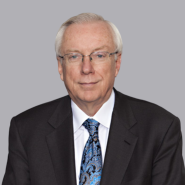Written Description is Not Always Your Friend
- November 21, 2022
- Article
Associated People
Associated Technologies
While an adequate written description is essential for patentability, 35 U.S.C. § 112(a), like everything else too much can have adverse consequences as uniQure biopharma recently learned in IPR2021-00926 (IPR) involving U.S.P. 9,982,248 (‘248).
The ‘248 patent specification defines many conventional terms in the polypeptide and pharmaceutical arts. A definition which ultimately sunk many of ‘248 claims was “treat” or “treatment.” Treatment of a disease may have different meanings depending on the context. For example, it is well-known to treat Alzheimer’s or Parkinson’s disease with anti-psychotics to improve a patient’s quality of life without curing the underlying disease. But treating a bacterial infection with an antibiotic normally does mean “curing” the disease by killing off the bacteria. While defining terms to avoid issues in prosecution, or litigation or licensing may be useful, it must be done with a view to the specific invention. If the disease is Parkinson’s defining the term as a “cure” will create enablement issues absent proof that the disclosed treatment cures Parkinson’s and not, simply ameliorates its symptoms. The ‘248 patent was directed to treating acoagulopathy in humans which includes hemophilia B.
The ‘248 patent defined the term “treat” or “treatment” as:
In the present text the term “treat” or “treatment” of a pathology means the prophylaxis and/or therapy and/or cure of this pathology. The term prophylaxis means advantageously to at least partially arrest the development of a potential disease and/or to prevent the worsening of symptoms or progression of a disease. Advantageously, the term therapy means a partial or total alleviation of the disease symptoms.
In the IPR the definition became dispositive of the patentability of some claims at issue. The ‘248 patent was directed to treating acoagulopathy with gene therapy. Acoagulopathy is caused by a body’s inability to generate the vitamin K-dependent glycoprotein, FIX, synthesized in the liver, and playing a fundamental role in the coagulation cascade. With gene therapy the concept was to help the body synthesize FIX. Others had attempted this with varying degrees of success. One key to the success of the’248 patent was the use of a specific adeno-associated virus (AVV) for inserting the FIX glycoprotein to provide for expression of FIX in vivo. The prior art to Manno taught the use of AVV to introduce FIX into a patient with hemophilia B where therapeutic levels of FIX were achieved and maintained for about 8 weeks and experienced an immune response which caused a short duration of efficacy. In contrast Manno reported that in dogs and nonhuman primates the expression was long lasting.
Manno was combined with another reference, Stafford, where Manno was used to address the deficiencies in Stafford. The patentee argued that Manno failed at treating hemophilia B. This argument was dismissed by the PTAB because the PTAB had adopted as the definition the one proposed by the Petitioner taken from the specification. A definition which defined “treating” hemophilia which included partial alleviation of symptoms, for any duration of therapeutic efficacy. Here the evidence was that the Manno therapeutic efficacy lasted for 10 weeks. A declaration submitted by the patentee was dismissed because it assumed claim limitations related to the duration of treatment and efficacy that under the PTAB claim interpretation were not present in the claims.
Here arguments that may have succeeded were negated by the Patentee’s definition of “treatment.” Had the definition not been present the Patentee could have presented evidence as to how one skilled in the art would have interpreted “treatment” which could have included a long duration without an immune response, an argument precluded by the specification’s definition. The patentee wanted broad protection which its definition provided but in doing so undercut the patentability of the invention.
In defining terms in an application, one needs to first carefully consider whether defining the term will be advantageous or are there possible adverse consequences. Here the PTAB used the definition against the Patentee. Had the term not been defined then the Patentee could have provided testimony as to what how term would be understood by one of ordinary skill in the art. Absent a definition there would have been a battle of the experts where the Patentee’s arguments might have been persuasive. Where the term is unusual or not well understood, then a definition may be required but then the definition should be carefully considered in view of the inventor’s objective. Broad definitions do not necessarily lead to strong claims and may preclude patenting later developments.
Recent Publications
Federal Circuit Holds Prosecution History Disclaimer Applicable to Design Patents
by Sana Tahir, Law Clerk and Andrew Ollis, Partner










 Counseling & Strategic Advice
Counseling & Strategic Advice IP Transactions
IP Transactions Litigation
Litigation PTAB Proceedings
PTAB Proceedings Technology Transfer
Technology Transfer Trademark & Designs
Trademark & Designs U.S. Patent Procurement (Application Drafting & Prosecution)
U.S. Patent Procurement (Application Drafting & Prosecution)








